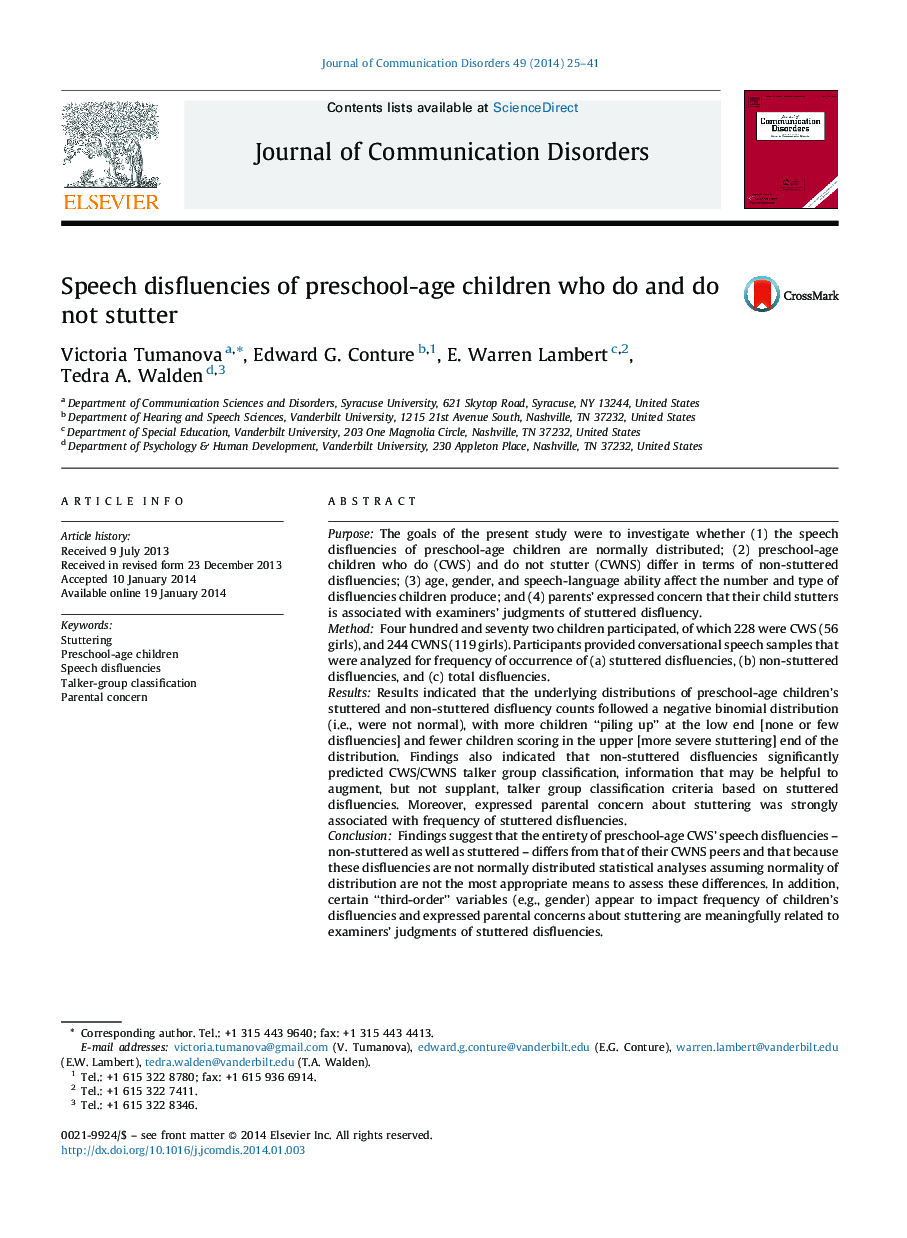| کد مقاله | کد نشریه | سال انتشار | مقاله انگلیسی | نسخه تمام متن |
|---|---|---|---|---|
| 910812 | 1473107 | 2014 | 17 صفحه PDF | دانلود رایگان |
• We assessed fluency of conversational speech of 472 preschool-age children.
• Preschool-age children's disfluency counts are not normally distributed.
• Non-stuttered disfluencies can be used to augment talker group classification criteria.
• Boys produce more non-stuttered disfluencies than girls.
• Parental concern for stuttering is strongly associated with stuttered disfluency frequency.
PurposeThe goals of the present study were to investigate whether (1) the speech disfluencies of preschool-age children are normally distributed; (2) preschool-age children who do (CWS) and do not stutter (CWNS) differ in terms of non-stuttered disfluencies; (3) age, gender, and speech-language ability affect the number and type of disfluencies children produce; and (4) parents’ expressed concern that their child stutters is associated with examiners’ judgments of stuttered disfluency.MethodFour hundred and seventy two children participated, of which 228 were CWS (56 girls), and 244 CWNS (119 girls). Participants provided conversational speech samples that were analyzed for frequency of occurrence of (a) stuttered disfluencies, (b) non-stuttered disfluencies, and (c) total disfluencies.ResultsResults indicated that the underlying distributions of preschool-age children's stuttered and non-stuttered disfluency counts followed a negative binomial distribution (i.e., were not normal), with more children “piling up” at the low end [none or few disfluencies] and fewer children scoring in the upper [more severe stuttering] end of the distribution. Findings also indicated that non-stuttered disfluencies significantly predicted CWS/CWNS talker group classification, information that may be helpful to augment, but not supplant, talker group classification criteria based on stuttered disfluencies. Moreover, expressed parental concern about stuttering was strongly associated with frequency of stuttered disfluencies.ConclusionFindings suggest that the entirety of preschool-age CWS’ speech disfluencies – non-stuttered as well as stuttered – differs from that of their CWNS peers and that because these disfluencies are not normally distributed statistical analyses assuming normality of distribution are not the most appropriate means to assess these differences. In addition, certain “third-order” variables (e.g., gender) appear to impact frequency of children's disfluencies and expressed parental concerns about stuttering are meaningfully related to examiners’ judgments of stuttered disfluencies.Learning outcomes: The reader will recognize differences in speech disfluencies of preschool-age children who do and do not stutter. The reader will recognize whether age, gender and speech-language ability affect the number and type of disfluencies children produce. The reader will describe whether parental concern about stuttering is associated with examiners’ judgments of stuttering.
Journal: Journal of Communication Disorders - Volume 49, May–June 2014, Pages 25–41
